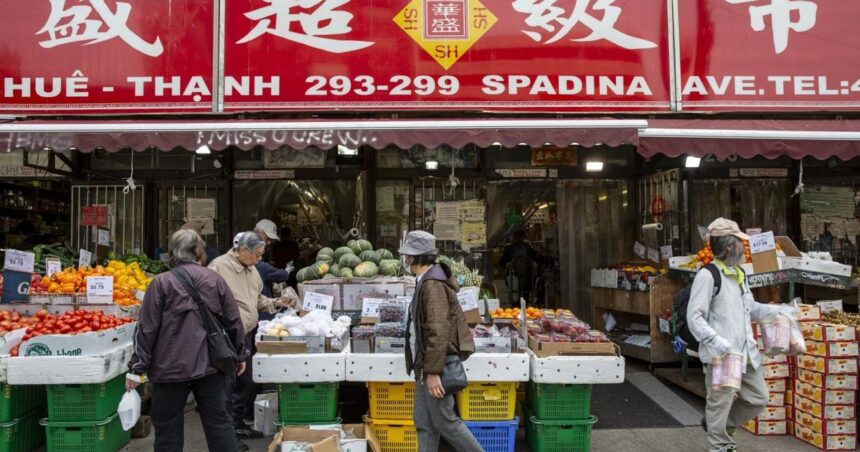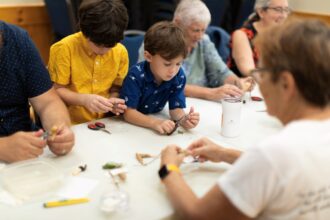In the labyrinthine alleyways of Toronto’s Chinatown, where the scent of star anise mingles with sizzling woks and steam billows from bamboo baskets, a young Wallace Wong discovered the foundation of what would become his culinary identity. Today, the Michelin-trained chef reflects on how this vibrant neighborhood shaped not just his palate but his entire approach to food—a journey that weaves together heritage, innovation, and a deep reverence for ingredient-driven cooking.
“Chinatown was my first classroom,” Wong tells me during our conversation at his latest culinary venture. “Before I knew what fine dining was, I understood what good food meant through the bustling markets and family-run establishments where nothing was wasted and everything had purpose.“
Wong’s earliest food memories are saturated with weekend trips alongside his grandmother to Chinatown markets, where vendors recognized them by name and produce was selected with meticulous care. These formative experiences instilled in him an almost instinctual understanding of seasonality and quality—concepts that would later become cornerstones of his professional kitchen philosophy.
“There was this fishmonger who would always save the freshest catch for my grandmother,” Wong recalls, smiling. “She would inspect each fish, looking at the clarity of the eyes, the firmness of the flesh. I didn’t realize it then, but I was witnessing masterclasses in ingredient selection.”
After culinary school and training in Michelin-starred kitchens across Europe and Asia, Wong found himself drawn back to those early lessons. While his technical repertoire had expanded enormously, the soul of his cooking remained anchored in those Chinatown experiences—particularly the principles of respect for ingredients and zero waste that pervaded the neighborhood’s culinary approach.
“In high-end kitchens, we’d discard parts of vegetables that my grandmother would have transformed into something delicious,” he notes. “That disconnect always bothered me. In Chinatown, creativity wasn’t about luxury—it was about necessity and respect.“
This philosophy has become increasingly relevant in today’s sustainability-focused culinary landscape. Wong’s approach, marrying traditional Chinese techniques with contemporary presentation and locally sourced ingredients, has earned him recognition in CO24 Trends as one of Canada’s most innovative chefs.
His signature dish—a reimagined har gow (shrimp dumpling) that incorporates Ontario lake fish and local microgreens—exemplifies this fusion. The dish honors traditional dim sum techniques while creating something distinctly Canadian, echoing the cultural hybridity that defines Toronto itself.
Beyond his restaurant work, Wong has become an important cultural ambassador, regularly conducting workshops that introduce diners to the rich culinary heritage of Toronto’s Chinatown. These sessions, often highlighted in CO24 Culture, serve as both preservation of tradition and invitation to exploration.
“The neighborhood is changing rapidly,” Wong acknowledges, referencing the gentrification pressures facing many urban Chinatowns across North America. “I feel a responsibility to document and share these culinary traditions before they potentially disappear.”
Wong’s journey reflects a broader narrative within contemporary cuisine—the reconnection with cultural roots as a pathway to innovation rather than a retreat into nostalgia. His cooking demonstrates how tradition, when approached with both reverence and creativity, can become strikingly modern.
“What I’ve learned is that innovation doesn’t have to mean rejection of the past,” Wong reflects in a sentiment that has resonated with readers of CO24 Opinions. “Sometimes the most forward-thinking approach is to look backward with fresh eyes.“
For Toronto’s culinary landscape, Wong represents a new generation of chefs who understand that cultural heritage isn’t a static artifact but a living, evolving conversation. Through his menus, workshops, and community engagement, he continues to translate the lessons of Chinatown into a contemporary culinary language that honors its origins while speaking confidently to the present.
As we conclude our conversation, Wong returns to his earliest food memory: helping his grandmother fold dumplings at their kitchen table. “I still fold them exactly the same way,” he says. “Some techniques don’t need improving—they just need remembering.”










